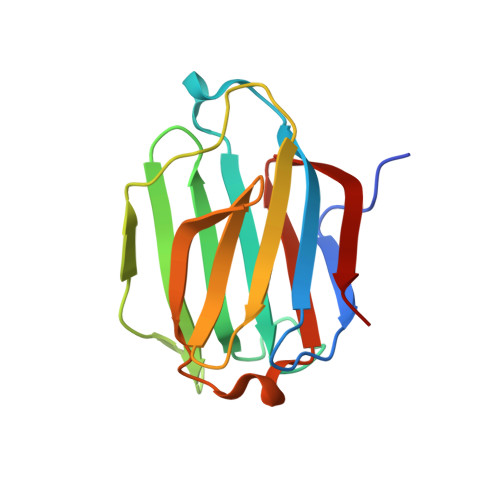Glutathione disrupts galectin-10 Charcot-Leyden crystal formation to possibly ameliorate eosinophil-based diseases such as asthma.
Na, H., Sayed, H., Ayala, G.J., Wang, X., Liu, Y., Yu, J., Liu, T., Mayo, K.H., Su, J.(2023) Acta Biochim Biophys Sin (Shanghai) 55: 613-622
- PubMed: 36988350
- DOI: https://doi.org/10.3724/abbs.2023050
- Primary Citation of Related Structures:
7XXU, 7XXV, 7XXW, 7XXX, 7XXY, 7XXZ - PubMed Abstract:
Charcot-Leyden crystals (CLCs) are the hallmark of many eosinophilic-based diseases, such as asthma. Here, we report that reduced glutathione (GSH) disrupts CLCs and inhibits crystallization of human galectin-10 (Gal-10). GSH has no effect on CLCs from monkeys ( Macaca fascicularis or M. mulatta ), even though monkey Gal-10s contain Cys29 and Cys32. Interestingly, human Gal-10 contains another cysteine residue (Cys57). Because GSH cannot disrupt CLCs formed by the human Gal-10 variant C57A or inhibit its crystallization, the effects of GSH on human Gal-10 or CLCs most likely occur by chemical modification of Cys57. We further report the crystal structures of Gal-10 from M . fascicularis and M . mulatta , along with their ability to bind to lactose and inhibit erythrocyte agglutination. Structural comparison with human Gal-10 shows that Cys57 and Gln75 within the ligand binding site are responsible for the loss of lactose binding. Pull-down experiments and mass spectrometry show that human Gal-10 interacts with tubulin α-1B, with GSH, GTP and Mg 2+ stabilizing this interaction and colchicine inhibiting it. Overall, this study enhances our understanding of Gal-10 function and CLC formation and suggests that GSH may be used as a pharmaceutical agent to ameliorate CLC-induced diseases.
Organizational Affiliation:
Engineering Research Center of Glycoconjugates Ministry of Education, Jilin Provincial Key Laboratory of Chemistry and Biology of Changbai Mountain Natural Drugs, School of Life Sciences, Northeast Normal University, Changchun 130024, China.














